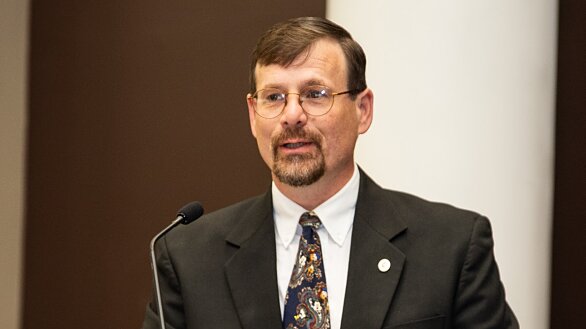Sexual abuse in UM Scout troops is nearly non-existent––LET’S KEEP IT THAT WAY
By Steven Scheid
Secular headlines about sexual abuse in Boy Scout troops and the bankruptcy filing by Boy Scout of America lead many people to believe that there is an alarming rate of sexual abuse within Scout troops, including troops chartered by the United Methodist Church.
The fact that one in six males have been sexually abused increases the perception that there must be thousands of incidents of sexual abuse within Scout units.
However, the cumulative rate of reported sexual abuse within United Methodist sponsored units over the last ten years is 0.001 percent. With more than 300,000 youth involved annually, there were only three claims. Of course, one is too many.
During the last 20 years, the rate of abuse in the general population is 125,000 percent higher than the rate of abuse found in United Methodist sponsored Scouting units across the same twenty-year period.
In October and November 2020, churches were asked if there was a past relationship with Boy Scouts of America. More than 9,000 United Methodist churches responded and filed a proof of claim with the court overseeing the BSA bankruptcy.
Our history
Our understandings and awareness of protecting children have changed. During the last 100 years, abuse has moved from a shameful secret to a recognized problem.
There was a time when gang showers were institutionalized. The coach or his assistant would check the name of each naked boy as he walked by. By current standards, the snapping of a towel, being exposed to gang showers, or having adults and youth shower together is wrong. Do we sue every school district, gym coach, teacher’s assistant, or public swimming pool? How can we rectify the past with today’s standards?
It was not until 2007 when the CDC issued sexual abuse guidelines for youth-serving agencies. The agency noted, “Criminal background checks are an important tool in screening and selection. However, they have limitations. Criminal background checks will not identify most sexual offenders because most have not been caught.”
When this report was published, an efficient, effective, and affordable nationwide background screening system was not available. Now anyone can (with permission) run a national background check electronically.
Multiple states have changed their statutes of limitation in response to delayed reports. To help “clean things up,” the laws in some states have incorporated revival windows. These windows open claims from long past seasons.
BSA action
Like the rest of America, Boy Scouts of America was not perfect in its approach to youth protection in the past, but BSA’s knowledge and understanding of issues surrounding abuse have constantly increased. They have joined with other youth-serving organizations to provide a wall between young people and potential abusers.
Today a free Youth Protection Program is available to anyone. No adult can attend an event over 72 hours without the training, including parents. Every youth and guardian must review the pamphlet “How to Protect Your Children From Child Abuse: A Parent’s Guide.”
BSA requires training by all volunteers, youth, and parents. There is a guarantee that no youth will be alone with an adult, and youth are taught how to recognize warning signs. They have a starting language for sharing what did happen or might have happened. They are prepared to resist and respond to situations.
The future
The expanded windows of statutes of limitation and the litigious nature of our society put all youth-serving organizations at risk. The BSA is not the first nor the last agency with pockets to be picked.
BSA has a $10-million-per-incident policy. Even in bankruptcy, this policy was acquired because the rate of abuse is so low. Most claims are youth-on-youth abuse.
Reporting has increased as youth know what is not acceptable and what to do about it. Total recent claims are still single digits for millions of youths involved. The training, change in culture, and involvement of everyone has been effective.
Chartering and the church
The BSA chartering system is a strength for Scouting, but too many churches do little more than grant space to a unit.
Churches must engage with shared responsibility for selecting Scout leaders and ensuring they are trained and safe to be around young people. A check of the current registration with BSA and current Youth Protection training is a good start. Get to know those who are modeling the values of the church. Even church employees need training and review. Predators look for access to youth and church leaders appear safe.
Allowing a troop to become tenants of a church building is not the vision. Scouts and leaders need to be part of the faith community.
If you have any concerns about the church’s responsibility and litigation, please call The Center for Scouting Ministries. We have been a part of the Ad Hoc Committee within the bankruptcy and have spent months engaged with legal counsel on what is needed to protect churches. We had direct input into the new charter agreement.
Resist any temptation to drop Scouting because of potential problems when doing so will deprive the youth of life-changing experiences and continue the greying trend of our struggling church. We need to lean in when there are challenges and learn from the past to create a better future.
Steven Scheid is director of the Center for Scouting Ministries of the General Commission on United Methodist Men.


